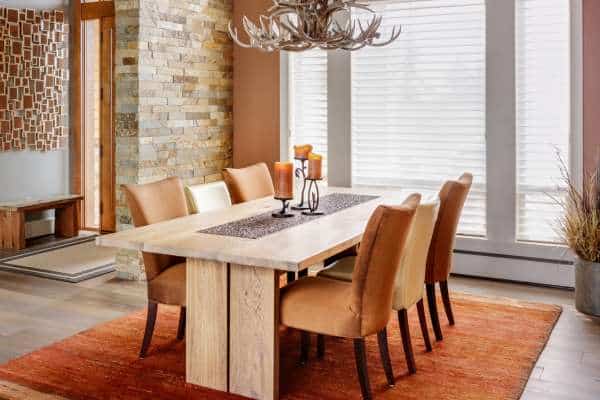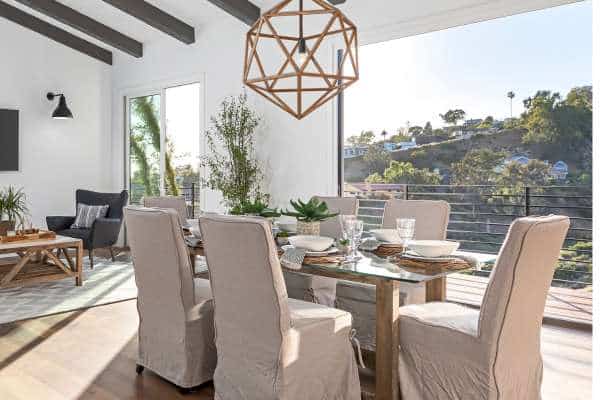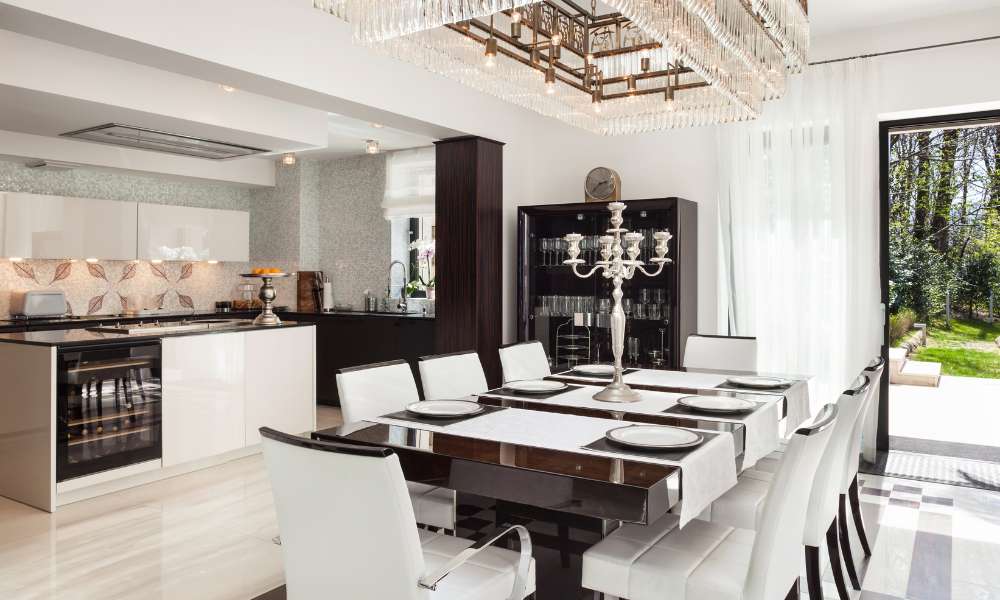Choosing the right Tall for a dining room table is crucial for comfort and functionality. Standard heights typically range from 28 to 30 inches, but various factors such as chair height, user demographics, and intended use can influence the ideal table height. Whether for casual or formal dining, understanding these considerations ensures a comfortable and enjoyable dining experience. This guide provides insights into standard table heights and tips for customizing to meet specific needs.
Standard Heights of Dining Room Tables

Residential Standards
The typical height range for residential dining room tables is 28 to 30 inches (71 to 76 cm) from the floor to the tabletop. This height range is standard because it provides optimal comfort for most adults when seated, allowing enough space for legs under the table while maintaining a comfortable reach for dining. This height ensures that the table can accommodate various activities, from meals to homework or casual conversations.
Commercial Standards
In commercial settings, such as restaurants, eating table heights commonly fall within the same range as residential tables, 28 to 30 inches. However, some establishments may opt for slightly taller tables, up to 32 inches, to cater to different seating arrangements and enhance the dining experience. Compared to residential standards, commercial tables may need to accommodate a broader range of user heights and seating types, making flexibility in elevation more critical.
Variations in Standards
There are notable variations in dining table heights due to regional preferences and historical trends. For example, in certain cultures, lower eating tables are common, reflecting traditional dining practices. Additionally, historical changes in furniture design have influenced standard table heights over time, adapting to shifts in lifestyle and ergonomic research. Understanding these variations helps in selecting the right table elevation to suit personal or cultural preferences.
Factors Influencing Dining Table Height

Intended Use
The intended use of a dining table significantly influences its height. For casual dining, a standard height of 28 to 30 inches is ideal for comfort and convenience. Formal eating tables might adhere to the same height range but often incorporate design elements that add elegance. Multipurpose tables, used for both dining and work, might require adjustable heights or fall within a more flexible range to accommodate different activities comfortably.
Chair Height
Chair height plays a crucial role in determining the appropriate eating table height. Standard chair seat heights range from 17 to 19 inches (43 to 48 cm). The relationship between chair and table height is essential for ensuring comfort; typically, there should be a 10 to 12-inch difference between the chair seat and the tabletop. This spacing allows diners to sit comfortably without feeling cramped or too low relative to the table.
User Demographics
Considering the average height of users is vital in selecting the right table elevation. For families with children, elderly members, or individuals with disabilities, special adjustments might be necessary. Lower tables can be more accessible for children, while higher tables with proper support might benefit elderly users who find it difficult to sit down or stand up from low heights. Customizing table elevation to match user demographics ensures everyone can dine comfortably.
Design and Aesthetics
Design trends and aesthetics significantly influence eating table height. Modern, minimalist designs might favor slightly lower tables, while traditional styles might opt for standard or slightly higher heights. The role of visual proportion and balance is crucial in choosing table elevation, as the table should harmonize with the overall room design and furniture. The right height enhances the eating space’s aesthetic appeal while ensuring functional comfort.
Customizing Table Height

Personal Preferences
Adjusting table height to meet personal comfort and ergonomic needs is crucial for creating a pleasant dining experience. By measuring the distance from the floor to the ideal tabletop height, individuals can determine what height suits them best. Tools like adjustable chair models and height gauges can assist in finding the perfect table elevation, ensuring that the dining setup is tailored to individual needs and preferences.
Adjustable Tables
Tables with adjustable height features offer a versatile solution for various dining and working scenarios. These tables can be easily modified to suit different activities and user heights, providing flexibility and comfort. The benefits of adjustable tables include adaptability and enhanced ergonomic support. However, limitations may include higher costs and potential mechanical issues over time. Despite these drawbacks, adjustable tables remain a popular choice for those seeking a customizable dining experience.
DIY and Custom Builds
For those inclined towards DIY projects, building or modifying tables to achieve the desired height can be both rewarding and practical. Tips for successful custom builds include selecting the right materials, ensuring precise measurements, and reinforcing the table for stability. Considerations for durability and stability are paramount, as the desk must withstand regular use without compromising on safety or comfort. Read, How to Clean Dining Room Chairs. Custom-built tables offer the advantage of tailored design and functionality, meeting specific elevation requirements and aesthetic preferences.
Considerations for Different Dining Environments

Formal Dining Rooms
In formal dining rooms, the ideal table height typically ranges from 28 to 30 inches to align with standard eating chair heights and maintain elegance and comfort. The formality of the setting often demands precise attention to desk elevation to ensure a comfortable dining experience while reflecting sophistication and style. Formal eating tables are designed to accommodate multiple courses and longer meal times, making comfort a priority.
Casual Dining Areas
For casual eating areas, preferred table heights also fall within the 28 to 30-inch range, providing a balance of comfort and practicality. These spaces often serve multiple purposes, from quick meals to casual gatherings, and require an elevation that supports various activities comfortably. The focus in casual settings is on ease of use and accessibility, ensuring that the desk elevation caters to everyday dining needs.
Small and Large Spaces
The size of the eating area significantly impacts table height selection. In small spaces, a standard elevation table can make the room feel more spacious, while in larger areas, slightly taller tables can create a more proportional and balanced look. Strategies for choosing the right elevation include considering the ceiling height, room dimensions, and overall design aesthetic. Ensuring the desk elevation complements the space enhances both functionality and visual appeal.
Outdoor Dining
Outdoor dining tables should adhere to standards that prioritize durability and comfort. The recommended height for outdoor tables is generally similar to indoor tables, around 28 to 30 inches. However, additional factors like weather resistance and material durability are crucial. Selecting materials like treated wood, metal, or weather-resistant plastic ensures the table can withstand outdoor conditions while providing a comfortable dining elevation.
Conclusion
Choosing the appropriate height for a dining room table is essential for enhancing comfort, functionality, and overall dining experience. Whether for formal eating rooms, casual dining areas, or outdoor spaces, understanding the standard heights and the factors that influence these choices helps in making informed decisions. Personal preferences, chair heights, user demographics, and design aesthetics all play significant roles in determining the ideal desk height. Additionally, considering the specific environment and its unique requirements ensures that the desk complements the space perfectly.


